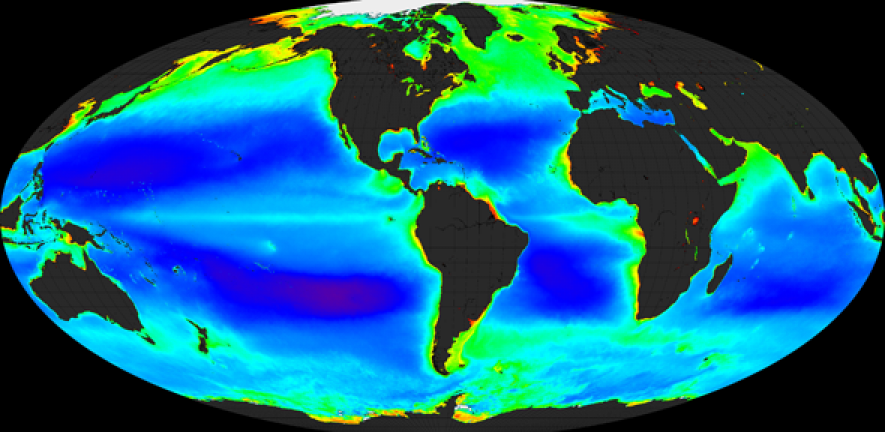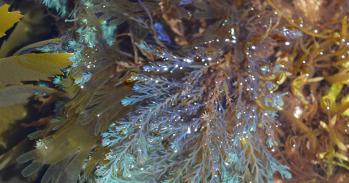
Scientists have calculated that millions of tonnes of hydrocarbons are produced annually by photosynthetic bacteria in the world’s oceans.
Scientists have calculated that millions of tonnes of hydrocarbons are produced annually by photosynthetic bacteria in the world’s oceans.
This cycle is like an insurance policy – the hydrocarbon-producing and hydrocarbon-degrading bacteria exist in equilibrium with each other
David Lea-Smith
An international team of researchers, led by the University of Cambridge, has estimated the amount of hydrocarbons – the primary ingredient in crude oil – that are produced by a massive population of photosynthetic marine microbes, called cyanobacteria. These organisms in turn support another population of bacteria that ‘feed’ on these compounds.
In the study, conducted in collaboration with researchers from the University of Warwick and MIT, and published today (5 October) in the journal Proceedings of the National Academy of Sciences of the USA, the scientists measured the amount of hydrocarbons in a range of laboratory-grown cyanobacteria and used the data to estimate the amount produced in the oceans.
Although each individual cell contains minuscule quantities of hydrocarbons, the researchers estimated that the amount produced by two of the most abundant cyanobacteria in the world – Prochlorococcus and Synechococcus – is more than two million tonnes in the ocean at any one time. This indicates that these two groups alone produce between 300 and 800 million tonnes of hydrocarbons per year, yet the concentration at any time in unpolluted areas of the oceans is tiny, thanks to other bacteria that break down the hydrocarbons as they are produced.
“Hydrocarbons are ubiquitous in the oceans, even in areas with minimal crude oil pollution, but what hadn’t been recognised until now is the likely quantity produced continually by living oceanic organisms,” said Professor Christopher Howe from Cambridge’s Department of Biochemistry, the paper’s senior author. “Based on our laboratory studies, we believe that at least two groups of cyanobacteria are responsible for the production of massive amounts of hydrocarbons, and this supports other bacteria that break down the hydrocarbons as they are produced.”
The scientists argue that the cyanobacteria are key players in an important biogeochemical cycle, which they refer to as the short-term hydrocarbon cycle. The study suggests that the amount of hydrocarbons produced by cyanobacteria dwarfs the amount of crude oil released into the seas by natural seepage or accidental oil spills.
However, the hydrocarbons produced by cyanobacteria are continually broken down by other bacteria, keeping the overall concentrations low. When an event such as an oil spill occurs, hydrocarbon-degrading bacteria are known to spring into action, with their numbers rapidly expanding, fuelled by the sudden local increase in their primary source of energy.
The researchers caution that their results do not in any way diminish the enormous harm caused by oil spills. Although some microorganisms are known to break down hydrocarbons in oil spills, they cannot repair the damage done to marine life, seabirds and coastal ecosystems.
“Oil spills cause widespread damage, but some parts of the marine environment recover faster than others,” said Dr David Lea-Smith, a postdoctoral researcher in the Department of Biochemistry, and the paper’s lead author. “This cycle is like an insurance policy – the hydrocarbon-producing and hydrocarbon-degrading bacteria exist in equilibrium with each other, and the latter multiply if and when an oil spill happens. However, these bacteria cannot reverse the damage to ecosystems which oil spills cause.”
The researchers stress the need to test if their findings are supported by direct measurements on cyanobacteria growing in the oceans. They are also interested in the possibility of harnessing the hydrocarbon production potential of cyanobacteria industrially as a possible source of fuel in the future, although such work is at a very early stage.
Reference:
Lea-Smith, D. et. al. “Contribution of cyanobacterial alkane production to the ocean hydrocarbon cycle.” PNAS (2015). DOI: 10.1073/pnas.1507274112

The text in this work is licensed under a Creative Commons Attribution 4.0 International License. For image use please see separate credits above.




